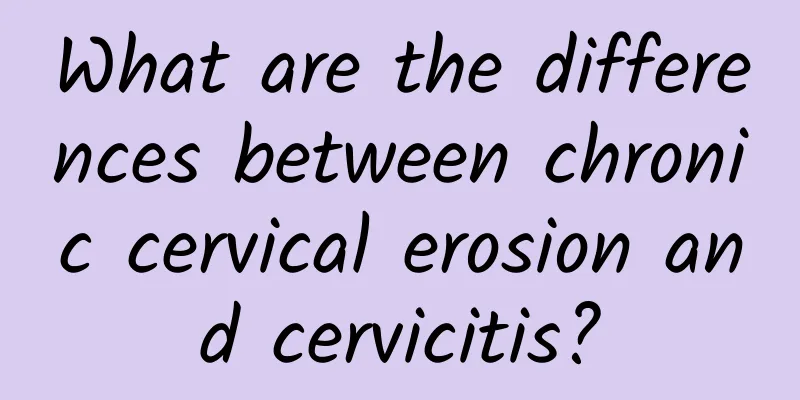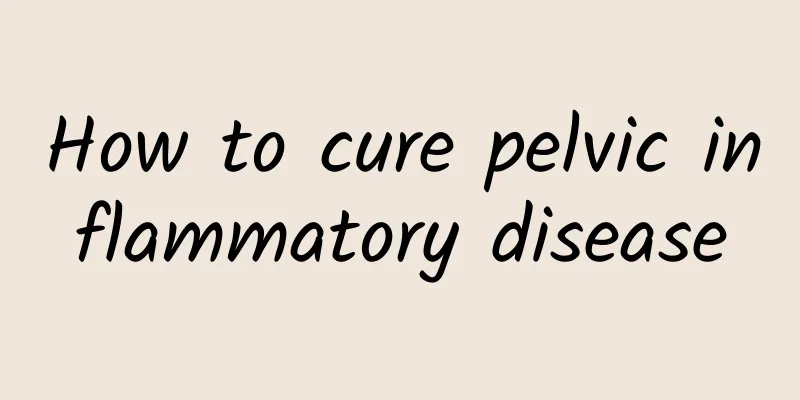What are the differences between chronic cervical erosion and cervicitis?

|
Cervicitis and chronic cervical erosion are both common cervical diseases in women. Many women easily confuse cervicitis and chronic cervical erosion. In fact, cervicitis is not entirely chronic cervical erosion. There are differences between cervicitis and chronic cervical erosion. Although their symptoms are similar, there are still some differences. So, what are the differences between cervicitis and chronic cervical erosion? The following is a detailed introduction. 1. The difference between cervicitis and chronic cervical erosion in terms of symptoms: Cervicitis can be divided into acute and chronic types. The symptoms of acute cervicitis are: increased vaginal discharge, purulent, accompanied by low back pain and lower abdominal discomfort; the symptoms of chronic cervicitis are: excessive vaginal discharge, milky white, mucous or blood in the vaginal discharge, or bleeding during sexual intercourse, accompanied by vulvar itching, lumbosacral pain, and aggravated menstruation. Moreover, if chronic cervicitis is not treated in time, it is likely to cause blockage of the fallopian tubes and cause infertility. Chronic cervical erosion is divided into three types: mild, moderate and severe according to the degree and area of erosion. The symptoms of chronic cervical erosion are generally manifested as: increased leucorrhea, yellow and sticky, or blood in leucorrhea, and a few patients have contact bleeding. Among them, patients with severe chronic cervical erosion are also accompanied by symptoms such as frequent urination and urgency. Inflammatory secretions can stimulate the vulva for a long time and cause vulvar pruritus. In addition, because the cervical lymphatics are directly connected to the paracervical connective tissue, inflammation can spread to the pelvic cavity through the lymphatic circulation, leading to pelvic connective tissue inflammation, lumbar pain, lower abdominal distension and other symptoms. 2. The difference between cervicitis and chronic cervical erosion in terms of treatment methods: Cervicitis is usually an inflammation caused by pathogens, so it is often treated with drugs, either vaginally or orally. Chronic cervical erosion is the result of further deterioration of cervicitis. General drug treatment has little effect, and physical or surgical treatment is generally used clinically. I hope the above situation will be helpful to women. In addition, it is recommended that women take good care of their health in their daily lives and prevent chronic cervical erosion and cervicitis as early as possible. For example, do not have sex during menstruation, pay attention to personal hygiene, and if you suffer from cervical disease, you should seek treatment in time without delay. |
<<: Symptoms of cervicitis erosion
>>: What should be done to check for chronic cervicitis
Recommend
Is cervical hypertrophy harmful to middle-aged women?
If cervical hypertrophy in middle-aged women is n...
What are the dangers of pelvic effusion in women?
Pelvic effusion is one of the most common disease...
How to self-diagnose pelvic effusion
Many friends who work have little time to pay att...
KO ice cream type edema! Spleen meridian yoga exercises promote metabolism
The weather is so hot, can't help but want to...
How to treat missed periods
How to treat menstrual irregularities? Reduced me...
3 groups of people who are prone to cervical erosion What are the symptoms of cervical erosion
3 major groups of people who are prone to cervica...
What causes ovarian cysts women need to know
As life and work become increasingly busy, many f...
What should I do if I have recurrent miscarriage caused by chromosomal abnormalities? Listen to the doctor
Recurrent miscarriage can cause great harm to a w...
What is the process of medical abortion? Medical abortion is divided into 5 steps
Medical abortion, also known as drug abortion, re...
Does irregular menstruation affect pregnancy?
Does irregular menstruation affect pregnancy? Whe...
Brief analysis of the precautions for ectopic pregnancy
Speaking of ectopic pregnancy, I believe many peo...
Can I have abortion with medicine if I have inflammation? Let's analyze it in detail below
If you want to have a medical abortion, you must ...
How long does it take to cure endometrial tuberculosis?
For many women nowadays, they always suffer from ...
How many of these five behaviors that harm your uterus do you encounter? Come and have a look!
External maintenance is a course that fairies lea...
Cervical erosion classification according to the depth of erosion surface
Cervical erosion is not a disease, but a manifest...









